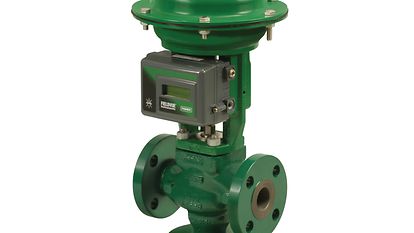Enhancing Functional Effectiveness with Advanced Control Valves
Enhancing Functional Effectiveness with Advanced Control Valves
Blog Article

Maximize Energy Cost Savings and Convenience With Advanced Building Automation Controls
In the realm of modern-day style and center management, the assimilation of innovative structure automation manages stands as a pivotal advancement. By harnessing the power of automation, buildings can adapt, respond, and evolve in means that were as soon as unbelievable.
Energy Effectiveness Perks
Power effectiveness advantages can significantly lower power consumption and functional costs in buildings. Energy-efficient systems, such as innovative building automation controls, can maximize the usage of sources like lights, heating, and air conditioning, leading to reduced power costs over time.
In addition, boosted energy efficiency can prolong the life-span of building tools and systems. By running much more successfully, a/c systems, lighting components, and other building elements experience much less wear and tear, resulting in decreased upkeep and replacement expenses. Additionally, energy-efficient structures usually regulate higher residential or commercial property worths and rental prices, giving long-lasting financial advantages to proprietors.
Moreover, energy efficiency can enhance owner convenience and efficiency. Appropriately managed interior environments with optimum lights and thermal problems produce a more favorable and pleasant work area, bring about boosted employee fulfillment and efficiency. In general, the energy performance benefits related to advanced structure automation controls are complex, including expense savings, ecological stewardship, and occupant well-being.
Boosted Convenience Control
Enhancing convenience control in structure settings needs an advanced integration of advanced automation systems for optimum resident well-being. By making use of sophisticated structure automation controls, facilities can tailor the indoor setting to fulfill the certain demands and choices of residents. control valves.
Improved convenience control goes beyond fundamental temperature changes. It consists of functions such as individualized setups, occupancy sensors, and natural light usage to create a dynamic and responsive setting. By integrating these sophisticated controls, structures can not just improve convenience but additionally enhance power efficiency by optimizing system procedures based on actual tenancy and usage patterns. Inevitably, prioritizing resident convenience with innovative automation systems causes a more pleasurable and much healthier interior atmosphere.
Operational Efficiency Improvements

Moreover, the implementation of real-time monitoring and analytics devices makes it possible for building drivers to recognize power inefficiencies and operational anomalies quickly. By continually keeping an eye on energy use patterns and system efficiency metrics, adjustments can be made in real-time to maximize energy consumption and guarantee peak functional efficiency. control valves. Additionally, incorporating Source need response methods right into structure automation controls can additionally improve operational efficiency by dynamically changing power use based upon grid problems and prices signals
Indoor Climate Optimization
Efficient indoor climate optimization is a basic facet of structure automation controls, guaranteeing occupants' convenience and wellness while making best use of power savings. By using sophisticated sensors and controls, constructing automation systems can continually change and check temperature, humidity degrees, air quality, and air flow to develop an optimal indoor environment. Keeping comfy and constant conditions not just enhances passenger complete satisfaction but also improves efficiency and total wellness.
Interior environment optimization also plays an essential duty in power effectiveness. By fine-tuning heating, ventilation, and cooling systems based upon real-time data and occupancy patterns, developing automation controls can significantly decrease power consumption - control valves. For instance, executing techniques such as demand-controlled air flow and thermal zoning can assist minimize power waste while making certain that each area of the structure gets the essential conditioning.

Lasting Atmosphere Production
Building automation controls not only optimize interior climate problems for power performance and resident convenience but likewise lay the structure for producing a lasting atmosphere through critical management of sources and systems. By integrating advanced building automation technologies, such as sensing units, actuators, and intelligent software application, facilities can change and keep track of energy use in real-time to reduce waste and decrease their carbon footprint. These systems allow anticipating upkeep, recognizing prospective issues prior to they intensify and maximizing equipment performance to improve durability and efficiency.
In addition, sustainable atmosphere development extends past energy administration to include water preservation, waste reduction, and indoor air high quality improvement. Structure automation controls can control water usage, spot leaks, and guarantee proper garbage disposal methods, contributing to overall sustainability efforts. In addition, by checking and managing air flow and purification systems, these modern technologies enhance passenger wellness and productivity while decreasing power usage linked with HVAC operations.
Verdict
Finally, advanced structure automation regulates offer considerable advantages in terms of power savings, convenience control, operational performance, interior environment optimization, and producing a lasting atmosphere. By implementing these controls, buildings can accomplish optimum performance while lowering power usage and enhancing resident comfort. It is evident that using advanced automation technology is important in boosting structure efficiency and creating a much more lasting future.
Energy efficiency advantages can significantly lower power usage and operational costs in structures. On the whole, the energy performance advantages linked with basics sophisticated structure automation controls are diverse, incorporating cost financial savings, environmental stewardship, and resident health.
Furthermore, including demand action strategies into building automation controls can additionally boost operational performance by dynamically changing power use based on grid problems and rates signals.
Building automation manages not just maximize interior environment conditions for power efficiency and owner convenience however also lay the structure for creating a sustainable environment through calculated management of systems and resources.In final thought, progressed structure automation manages offer significant advantages in terms of power cost savings, comfort control, operational performance, interior environment optimization, and producing a sustainable setting.
Report this page